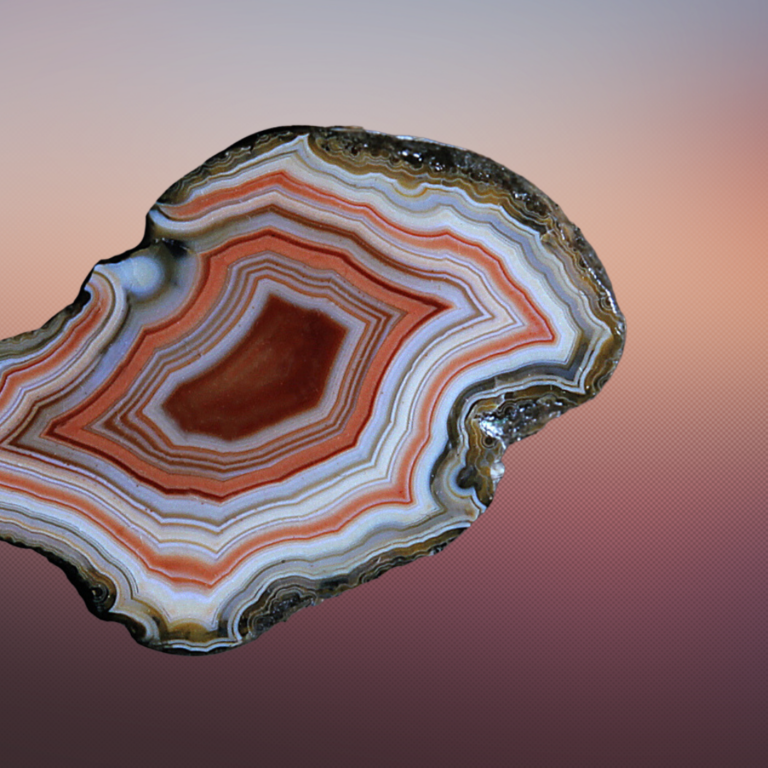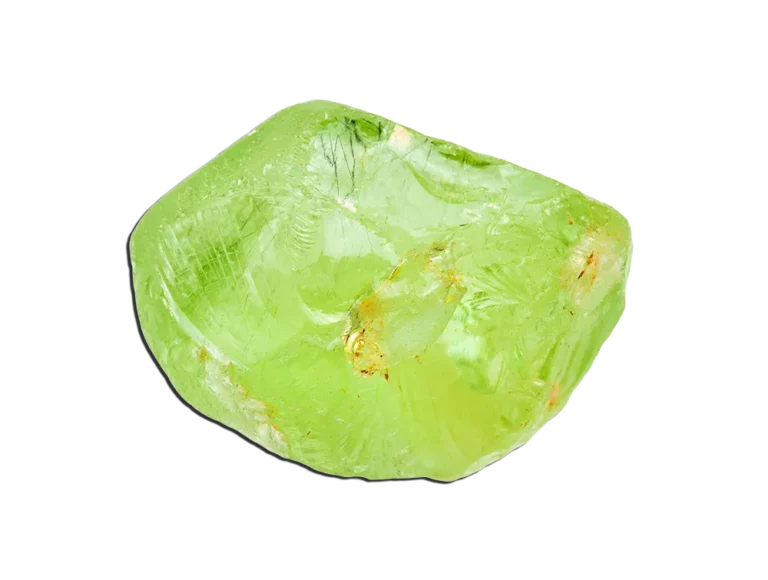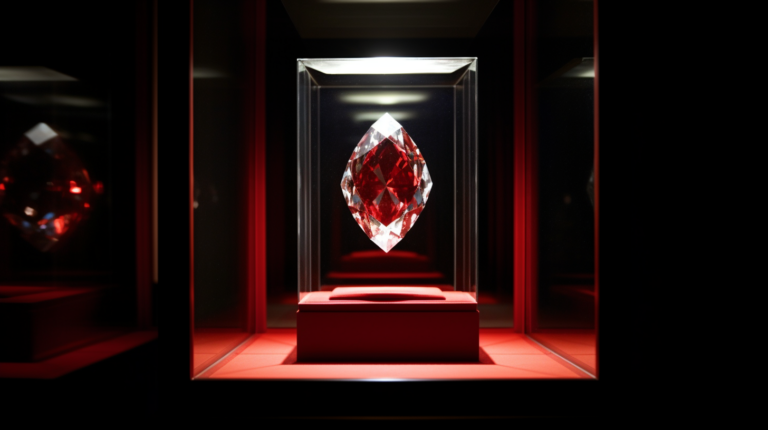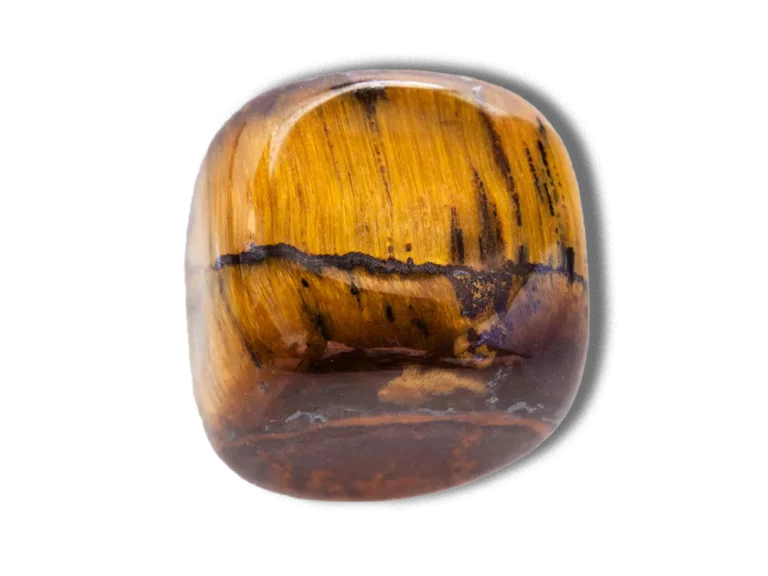Blue Opal: Properties, Benefits & Meanings
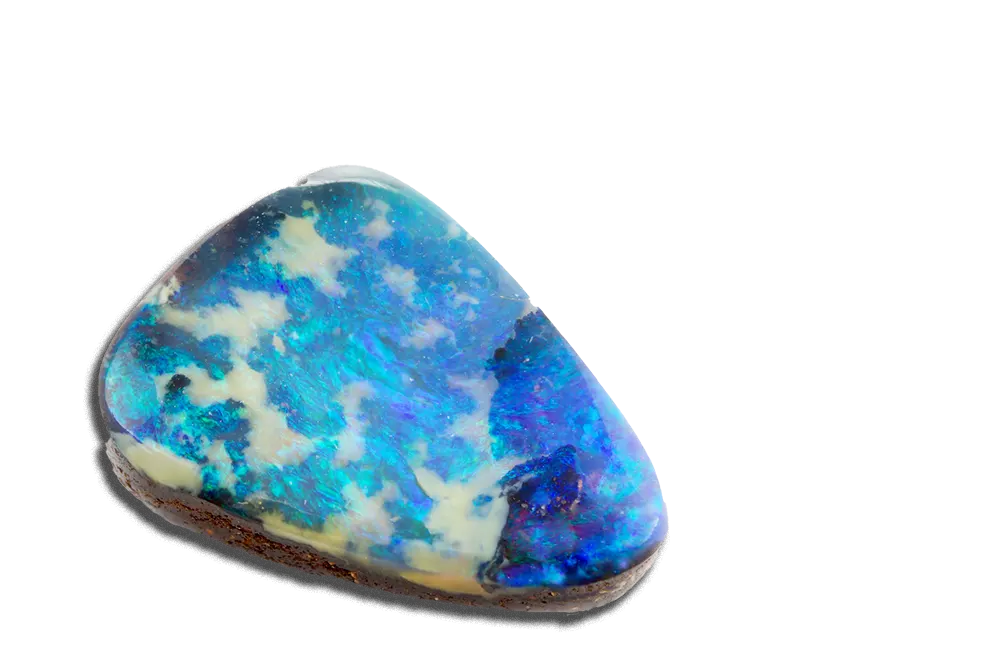
Blue Opal Overview
Blue Opal is a beautiful and rare variety of the common opal only found in a handful of places worldwide. Its rarity and powerful spiritual effects make it a perfect collector’s item.
It is related to the throat chakra and symbolizes communication and empathy, making it ideal for people looking for a purpose and the ability to connect to their fellow man. This article will talk about the properties, meanings, and uses of the Blue Opal stone.
What is The Blue Opal Gemstone?
Blue Opal is most commonly used as an ornamental stone, featured in necklaces, rings, bracelets, etcetera. However, in addition to being an excellent jewelry stone, the Blue Opal also has significance in spiritual pursuits.
People looking to find themselves and their purpose in life often benefit from having this stone around them. Trouble in communication with a loved one is said to be resolved with the involvement of the Blue Opal.
The blue or blue-green variety of Opal mainly found in Peru is called Blue Opal, more commonly termed Peruvian Blue Opal, a sought-after variant of the Blue Opal.
Blue Opal Properties
Blue Opal is a hydrated amorphous form of silica (SiO2 · nH2O) that may contain anywhere from 3 to 21% water by weight.
It is considered a mineraloid rather than a mineral. It is a common variety of Opal due to the distinct lack of play of color. The chemical composition is made of microcrystalline silica spheres that reflect the blue light spectrum.
It is formed at a relatively low temperature and can be found in the fissures of almost any kind of rock. It commonly occurs with limonite, sandstone, rhyolite marl—and basalt.
What are some other names for This Gem?
It is more commonly referred to as Peruvian Blue Opal because most of its supply is from Peru.
The Sanskrit word upala (उपल), which means ‘jewel,’ gave rise to the Greek derivative opállios, meaning “seeing a change in color.” This is believed to be the origin of the word Opal. The “Blue” in the name stems from its Blue color.
Andean Opal
Andean Opal is a trading name for the greenish blue variety of this gemstone, which comes from Peru.
It appeared in Lima, along with chrysocolla, in the early 1970s.
Where is It found?
The Andean Opal is mainly found in Peru from the Caraveli Province’s Andes Mountains’ Acari Mine.
However, it is also found in the United States, in the states of Nevada, Oregon, and Idaho.

Physical Properties Of Opals
The Blue Opal has the following properties:
| Mineral Group | Opal |
| Formula | SiO2 · nH2O |
| Color | Blue, Greenish Blue |
| Hardness (Mohs scale) | 5.5 – 6.5 |
| Refractive Index | 1.37 – 1.52 |
| Fracture | Conchoidal, Splintery |
| Tenacity | Brittle |
| Specific Gravity | 1.98 – 2.50 |
| Transparency | Opaque, Translucent |
What is the typical appearance?
Peruvian Opal, also known as Peruvian blue, is a semi-opaque to opaque stone found in Peru and cut to emphasize its natural matrix.
Common Opals have a unique property called “adularescence.” This trait, which only occurs in moonstones and sometimes rose quartz, refers to the glow that appears inside the stone instead of on its surface. This Adularescence that appears in opals is also known as Opalescence.
Andean Opal is typically translucent, blue-green. This color is caused by copper inclusions found within it. Dendritic inclusions of brown or black can be found.
Though attractive when first cut, translucent Andean opals often grow milky after some time. The translucency of stone can be restored by immersing it in water for only a limited time.

Price and Value
A blue opal with a bluish-green color can cost even more than a boulder or crystal opal. These beautiful opals cost $250 per carat.
Each blue Opal is unique, so determining its value will depend on the following factors:
- Size: The price of this Opal stone increases dramatically with an increase in size because larger stones are harder to find and more difficult to cut.
- Quality: Quality is determined by the number of imperfections in the gemstone. Clarity is also essential when determining the quality of the Opal.
- Color: The color of the Blue Opal influences its value as well. The more vibrant and intense the color, the higher the price. Some shades also are rare and, therefore, of a higher value than others.
- Cut: The cut of a gemstone also affects its price. As with all fine jewelry, the quality of the amount determines how beautiful and valuable it will be. The cut can make a massive difference in the price of specific stones.
- Location: Depending on where you buy it from, the price will vary wildly. This is because labor costs are a significant part of the final price of this product. For example, buying this stone in South Australia, Slovakia, or the UK will be more expensive than buying it in a third-world country like Ethiopia. Furthermore, bringing it out to Australia or other western countries is a significant cost for small businesses, so they might not be available at reasonable prices.
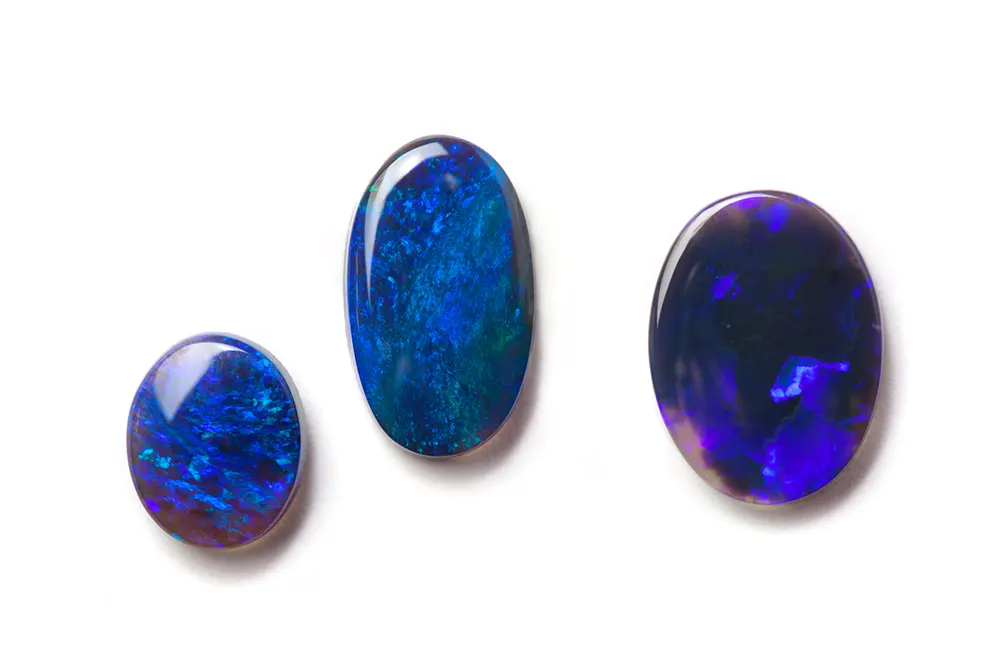
How to tell if It is genuine or not?
Synthetic opals have been manufactured since 1974 when the ordered sphere structure of Opal was discovered. The synthetic material, which has a regular structure that resembles the scales of a lizard or chicken’s feathers under magnification, is differentiated from natural blue Opal by its uniformity. Synthetic Opals are typically less dense than natural ones and often have a high degree of porosity.
Some methods to tell if Blue Opal is genuine or not are:
- Color: If the color is dull and flat, it’s probably fake. Opals reflect light differently throughout their interior; look for natural gradation in shade from center to edges.
- Acetone Test: Do an acetone test. Soak in acetone for a few minutes to see if the color comes off. If it does, then it’s likely fake.
- Check for weight: Check the weight of your Opal. If it’s too light, then it may be fake.
- Opalescence: Opals have a characteristic property of Opalescence, which can easily distinguish the genuine ones.

Chakra Association
Which Chakra does it Symbolize?
Blue Opal is a stone of the Throat Chakra, which symbolizes communication and self-expression. It helps you find your voice and speak your truth. This beautiful stone can help you overcome the fear of being wrong or saying something inappropriate. It will aid you in expressing yourself in a calm, clear manner that pleases others.
In Buddhism, it is associated with the heart chakra. It is believed to help you open your heart and make it easier for you to express your feelings. Blue opal is also thought to improve communication skills and enhance relationships with others.
Where are the abovementioned Chakras located?
- The Anahata, or heart chakra, is located near your heart—in the center of your chest.
- The throat chakra is located in the center of the neck. It is associated with various body parts, including the thyroid gland (which regulates energy processing) and your mouth, jaw, tongue, and shoulders.
What Birthstone Is It?
This specific opal is not a birthstone. However, the parent stone, Opal, is the April birthstone.
What Does It Symbolize?
- Truth and Honesty: Blue Opal is said to help you gain insight into your subconscious mind and to encourage you to speak your truth. They are also thought to be a good choice if you’re looking for a stone that will help promote honesty in relationships or business transactions.
- Spirituality and Intuition: It is a stone of spiritual awareness, helping you to connect with your higher self. It’s also thought to encourage intuitive thinking, making it an excellent choice for people who want to develop psychic abilities.
- Love and Romance: They are said to boost romantic feelings in relationships as well as promote fidelity among married partners.
- Health and Energy: Blue stones are powerful healing stones that can help you recover from illness or injury. It’s also thought to boost your vitality, making it an excellent choice for people who feel tired or run down much of the time.
- Empathy and Compassion: Blue Opal is thought to encourage empathy and compassion, making it an excellent choice for people who want to develop these qualities. It’s said to be especially useful in helping you connect with animals and nature spirits.
- Ability to Heal others: Blue Opal is believed to help you develop the ability to heal others. It’s said that this stone can open your heart chakra, allowing you to send healing energy out into the world. This can be especially useful if you want to work as a healer or therapist but aren’t sure how to get started.
What are the uses of Blue Opal Gemstones?
Blue opals have the following uses:
- Blue Opal rings can help you connect with your inner child and release past traumas. They are also a source of emotional healing. If you’re feeling stuck in your life, they can help you get moving again. They are said to be helpful for people who are depressed or sad because they remove negative energy from the environment.
- They can help you sense the spirits of plants and animals. Blue opals can make you feel more in touch with nature and its creatures.
- They can help you develop your psychic abilities. Blue opals can also help you awaken your psychic abilities, which are said to be very useful for people interested in astrology and numerology. They’re considered to be good stones for helping you develop your creativity.
- They can help remove energy blockages from the body, making you feel more energized and vibrant. Blue opals are also said to be good for healing emotional wounds, particularly those caused by people who have betrayed you. They can help you feel more secure in your relationships with others and make you feel more confident about your place in the world. Blue opals are thought to be very useful when dealing with people who have hurt your feelings or left you feeling abandoned.
- Blue Opal bracelets are often used to help the body heal and cleanse toxins. Some women say they benefit from Blue Opal when dealing with period pain or childbirth-related issues.
- The Blue opal gem is a stone of inspiration and joy on special occasions, especially when worn as jewelry. It can help you be creative and open to new ideas while encouraging you to follow through with them. Blue opal is a good choice for anyone who needs encouragement in their lives or has become stuck in a rut.
- The Owyhee blue opal was believed to connect one with the spirit realm, through which you could receive guidance and strengthen spiritual abilities.
- Blue opal is also considered a stone of good luck that can help bring prosperity and abundance into your life. It’s a protective stone that repels negativity and shields you from psychic attacks, which is why it is often used in spiritual healing.
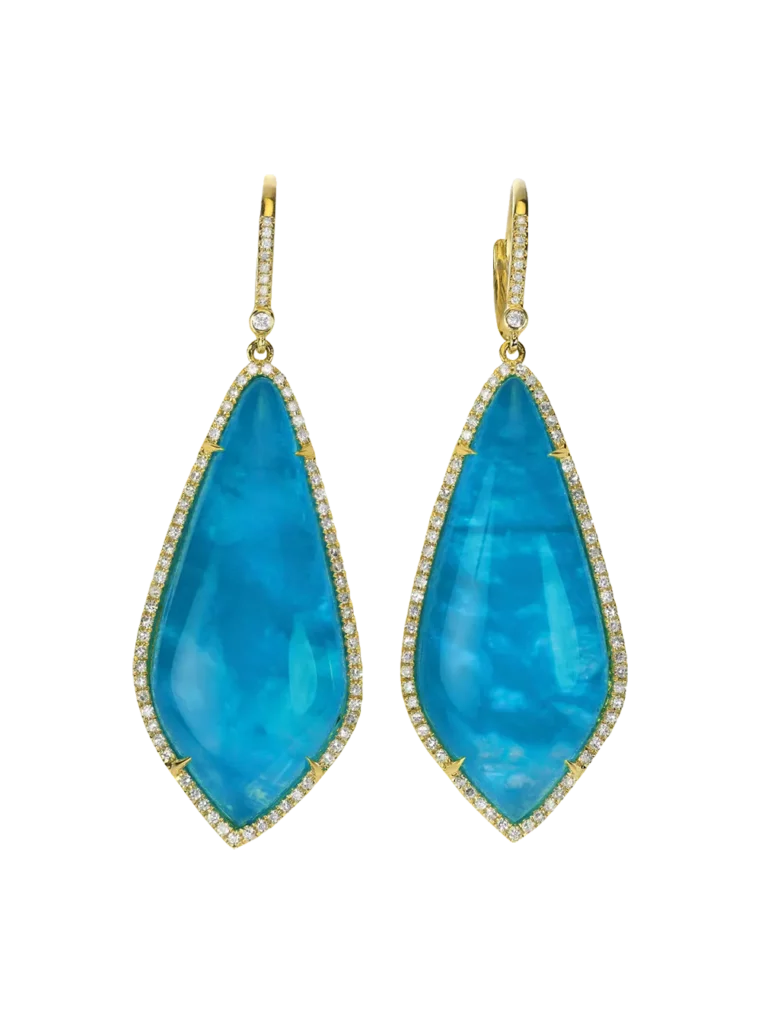
How to clean Blue Opal Jewelry?
Here are some steps to help your Blue Opal jewelry retain its beauty.
- One of the easiest ways to cleanse your Blue Opal is by running it under a gentle stream of cool water.
- Soak the stained area in warm water and scrub it gently with a soft toothbrush until all traces of the stain have disappeared.
- Wipe the crystal with a microfiber cloth until it shines.
- Cleanse it using burning sage to remove any negativity absorbed, which can negatively impact the surroundings. There is no one perfect way to cleanse your stone. You can experiment with smudging it in sage smoke or using a tuning fork. But whatever you do, remember that there’s no right way—do what feels good for you on any given day!
- There are various ways to recharge your amulet, including immersing it in moonlight or burying it underground. Give it at least six hours, but overnight is ideal.
Blue Opal should be protected from harsh chemicals and extreme heat, which could damage it.
Although most ultrasonic cleaners and steamers are safe, some precautions should be taken. For example, it’s best to keep Blue Opal jewelry apart from other pieces when storing them together.
FAQ
Is Blue Opal a natural stone?
Like all other types of opals, the blue Opals are not minerals but amorphous mineraloids. This means it comprises microcrystalline silicas that reflect light in the blue spectrum.
What is the cost of Blue Opal?
Opals with a blue-green color can cost more than yellow or black opals. A gorgeous blue opal that’s vivid and clear will be priced at $250 per carat—but it depends on how intense the color is, what kind of background it has (or doesn’t have), and whether there are inclusions within the gem.
What gemstones can be paired with Blue Opals?
Blue opals are beautiful but also look great when paired with other gemstones. For example, wear a blue opal ring with a blue spinel earrings or a Bixbite necklace. In addition to the abovementioned stones, you can wear the blue opal crystal pendants with other types of opals such as Rainbow Opal, White Opal, Australian Opal, Boulder Opal, Fire Opal, etc.
What is the meaning of Blue Opal?
Blue Opal, also known as Peruvian or Andean Opal, is a stone of higher truths that deepens our spiritual connection and understanding. It encourages us to surrender to Divine Will while fostering clear and honest communication—helping us find the courage and confidence necessary for speaking our truth always.
Does Blue Opal have any harmful effects?
Blue Opal is a stone of higher truth, which means it can be a powerful ally in helping us make difficult decisions. However, if you are not ready to face the truth about a situation or relationship, this gemstone may bring it to your attention—whether you like it or not!


